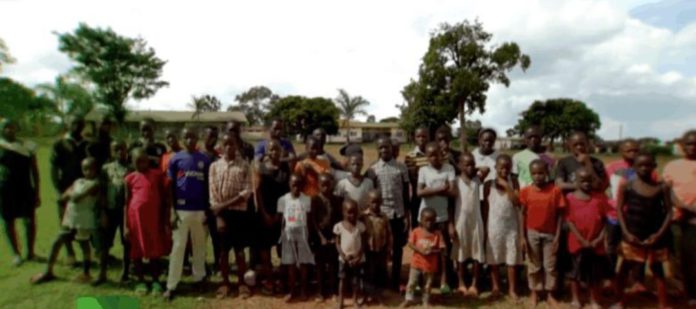Mariam Nabatanzi gave birth to twins a year after she was married at the age of 12. Five more sets of twins followed — along with four sets of triplets and five sets of quadruplets.
Three years ago, however, the 39-year-old Ugandan was abandoned by her husband, leaving her to support their surviving 38 children alone.
It was just the latest setback in a life marred by tragedy for Ms Nabatanzi, who lives with her children in four cramped houses made of cement blocks and topped with corrugated iron in a village surrounded by coffee fields 50 kilometres north of Kampala.
After her first sets of twins were born, Ms Nabatanzi went to a doctor who told her she had unusually large ovaries. He advised her that birth control like pills might cause health problems.
So the children kept coming.
Family sizes are at their largest in Africa. In Uganda, the fertility rate averages 5.6 children per woman, one of the continent’s highest, and more than double the global average of 2.4 children, according to the World Bank.
But even in Uganda, the size of Ms Nabatanzi’s family makes her an extreme outlier — although it’s far from the Guinness World Record, ascribed (with “a pinch of salt”) to a Russian peasant from the 1700s who reportedly had 16 pairs of twins, seven sets of triplets and four sets of quadruplets — a total of 69 children from 27 pregnancies.
Ms Nabatanzi’s last pregnancy, two and a half years ago, had complications.
It was her sixth set of twins and one of them died in childbirth, her sixth child to die.
Then her husband — often absent for long stretches — abandoned her. His name is now a family curse. Ms Nabatanzi refers to him using an expletive.
“I have grown up in tears, my man has passed me through a lot of suffering,” she said during an interview at her home, hands clasped as her eyes welled up.
“All my time has been spent looking after my children and working to earn some money.”
Desperate for cash, Ms Nabatanzi turns a hand to everything: hairdressing, event decorating, collecting and selling scrap metal, brewing local gin and selling herbal medicine.
The money is swallowed up by food, medical care, clothing and school fees.
On a wall in one room of her home hang proud portraits of some of her children graduating from school, gold tinsel around their necks.
“Mum is overwhelmed, the work is crushing her, we help where we can, like in cooking and washing, but she still carries the whole burden for the family. I feel for her,” said her eldest child Ivan Kibuka, 23, who had to drop out of secondary school when the money ran out.
Family tragedy
Ms Nabatanzi’s desire for a large family has its roots in tragedy.
Three days after she was born, Ms Nabatanzi’s mother abandoned the family: her father, the newborn girl and her five siblings.
“She just left us,” said Ms Nabatanzi, as some of her children played on the dirt floor while others did chores.
After her father remarried, her stepmother poisoned the five older children with crushed glass mixed in their food.
They all died. Ms Nabatanzi escaped because she was visiting a relative, she says.
“I was seven years old then, too young to even understand what death actually meant,” she said.
“I was told by relatives what had happened.”
She grew up wanting to have six children to rebuild her shattered family.
But providing a home for 38 children is a constant challenge.
Twelve of the children sleep on metal bunk beds with thin mattresses in one small room with grime-caked walls.
In the other rooms, some children pile onto shared mattresses while the others sleep on the dirt floor.
Older children help look after the young ones and everyone helps with chores like cooking.
A single day can require 25 kilograms of maize flour, Ms Nabatanzi says. Fish or meat are rare treats.
Having endured such a hard childhood herself, Ms Nabatanzi’s greatest wish now is for her children to be happy.
“I started taking on adult responsibilities at an early stage,” she said.
“I have not had joy, I think, since I was born.”

